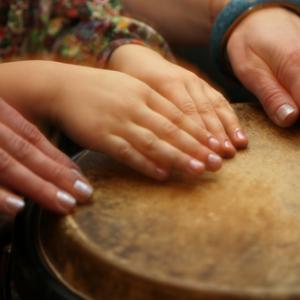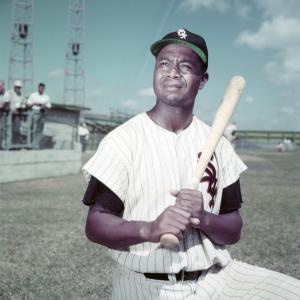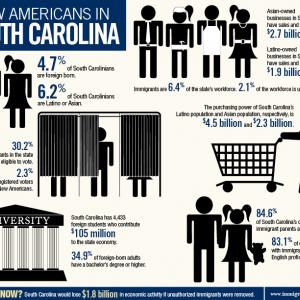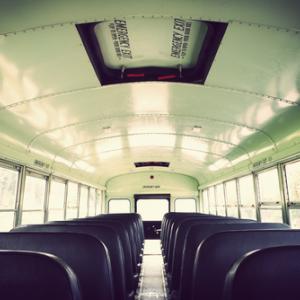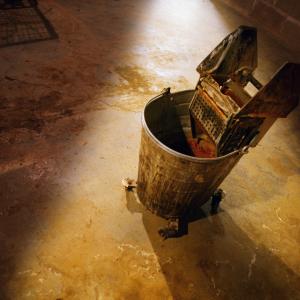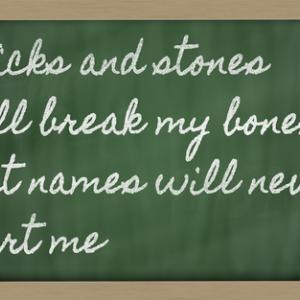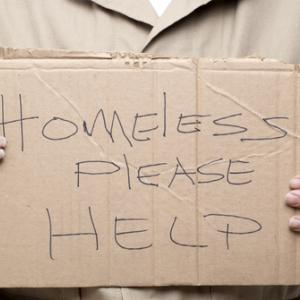Trevor Scott Barton is an elementary school teacher in Greenville, S.C. He is a blogger for the Teaching Tolerance project of the Southern Poverty Law Center.
Posts By This Author
Music and Domestic Tranquility
"We the people, in order to form a more perfect union ..."
I heard these words for the first time in a song when I was a kid. I was pouring a glass of orange juice in the kitchen when I heard it. Bugs Bunny had ended. I was waiting for Fat Albert and the Cosby Kids to begin. There was the familiar refrain of Schoolhouse Rock in between those cartoons.
"As your body grows bigger, your mind grows flowered, it's great to learn 'cause knowledge is power!" And there it was—the Preamble to the U.S. Constitution in song. I learned it and never forgot it.
When I became an elementary school teacher, one of my goals was to teach my students to sing the Preamble.
Awful Leads to Wonderful
Being a teacher is like being a farmer. You rise early in the morning. You irrigate and fertilize the field that is your classroom. You plant the seeds that are reading, writing, and arithmetic. You hope for good soil, warm sunshine, and gentle rain that are good homes, healthy foods, and adequate healthcare for your students. You work with your hands, feet and heart with your plants who are your students.
Your harvest is your students.
Your winter season of fallow fields is your summer break of empty classrooms.
Helping Billy Inherit the Earth
I try to teach in the present. With Billy, though, I found myself thinking about the future. Will middle school be a challenge for him? Will he be an outcast in high school? Or a target for bullies?
I wondered what contributions he might make to society as an adult. Would he start a revolution in the art world?
If his peers constantly slap their hands down and say there's no room for him, how will he react? Will he become a part of what author Alexandra Robbins calls the "cafeteria fringe,” those people who are not a part of the school's or society's in-crowd? Because he seems different, will he be labeled “geek,” “nerd” or “weirdo?”
As a teacher I want to help him overcome. But what can I do?
A Revolutionary Picture
Baseball players Larry Doby was black and Steve Gromek was white. Gromek was from the working-class culture of Hamtramck, Mich., and Doby from the Jim Crow culture of Camden, S.C.
One year earlier, on July 5, 1947, at Comiskey Park in Chicago, Doby had become the second African-American behind the great Jackie Robinson of the immortal Brooklyn Dodgers to play for a major league baseball team and the first African-American to play in the American League.
It was a revolutionary picture because it showed the world a way white supremacy and racism could be overcome.
Simply Seeing
Nikki Haley, the governor of my state, recently signed the South Carolina Illegal Immigration and Reform Act. The law, which is part of a recent wave of state immigration legislation, goes into effect in January. As she signed the bill, she stated:
“What I’m concerned about is the money we’re losing because of illegal immigration in this state. The money that’s lost in education and medical services and workers and employment and all of those things is well beyond millions of dollars …”
It is dehumanizing when you refer to people only in terms of money. Further, the research does not support the governor’s statement.
According to the Institute for Taxation and Economic Policy, undocumented workers in South Carolina paid $43.6 million in state and local taxes in 2010. Another study outlined the losses to the state if all unauthorized immigrants were removed from South Carolina. The state would lose $1.8 billion in economic activity, $782.9 million in gross state product and approximately 12,059 jobs.
Living Letters
I love to receive letters. When I was a little boy, I lived on a long, straight street and I could see the mail truck coming from a long way off. After the mailman stopped in front of our house, I ran with hope in my heart down our front walkway, between our two giant maple trees and across the street to our mailbox. Would there be a letter for me? Was someone in the world thinking of me?
One day last year it was not the mailman, but a second-grader on the school playground, who handed a letter to me. I unfolded it.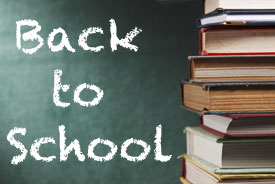
"Dear Mr. Barton, hi it Odeth from 2th grade I miss you a lot I wanted to know about you so much I am being good I am in 4th grade Do you miss me. I live in __________ I go to school in __________ I hope you will come to my school … can you come visit me in school ask for my name…I am 10 year old I want you to come to my school.
Your best student,
Odeth"
What a wonderful thing, to be remembered by a student.
The Sound of Learning
Imani walked down the hall with a paper cup in her hands.
She stopped and held up the cup to me. Inside of its paper walls were soil, water, and seeds — all those humble and elemental things that build a third-grader's scientific knowledge.
Imani was growing cabbage.
She was my student last year. She loved science and writing. I remember the look of wonder in her eyes when we studied weather. We learned about tornadoes. In my classroom, I had two 2-liter bottles connected by a tornado tube, a plastic piece that allows you to make a tornado by swirling the water around and around in one of the bottles. Imani held the bottles in her hands and marveled as her water formed into a giant, powerful funnel cloud.
"Wow," she whispered.
I love the sound of learning.
James and the Giant Book
In Roald Dahl's classic children's book James and the Giant Peach, 7-year-old orphan James Henry Trotter escapes his two rotten, abusive aunts by crawling into a giant peach. The peach rolls, floats, and flies him to a new life of wonder and love.
I'm reading this book aloud for the first time, and my listeners are spellbound by the story, especially the part where the very small old man opens the bag filled with magical crocodile tongues that will help a barren, broken peach tree grow fruit as big as a house.
"There's more power and magic in those things in there than in all the rest of the world put together," says the man.
There is.
Teachers Are Builders
"Teachers are builders," said my friend. "You build safe learning environments for your students. You build safe spaces for your parents. You build knowledge and experience for yourselves. You build community with each other. You are builders."
I like her image.
This year I'm going to work on the 'building community with each other' part.
The Pages in the Book Go 'Flip, Flip, Flip'
Editor's Note: Over the next two weeks, Sojourners is celebrating our teachers, parents, and mentors as children across the country head back to school. We'll offer a series of reflections on different aspects of education in our country.
My elementary school is a Title I school. About 97 percent of our students qualify for free and reduced lunch and Medicaid. Research shows us that many children raised in poverty struggle to learn to read. 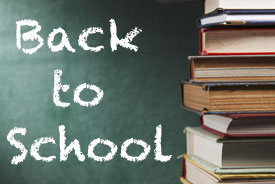
Common sense tells us that children who don't learn to read can't read to learn. They often reach a frustration level with school by the time they're in the third grade. According to the U.S. Department of Education, 70 percent of low-income fourth-grade students can't read at a basic level. I often wonder, "What can I do in my day-to-day work as a teacher to help?"
Riding the Bus to Equality
Every morning at 7:15, the doors of our school open wide to a line of bus riders ready to come inside. "Hello, Jaheem. Hi, Kiara. Hey, Imani. Hope you're having a good day, Omar," I call out as the students walk past me to the cafeteria for breakfast. I stand at the doors for a moment and watch the big, yellow buses puff their diesel exhaust and chug their way to the garage until it's time for their afternoon run.
Is there a more universal symbol for public schools than a big, yellow school bus?
Recognizing Greatness in a First Grader
There is a wonderful scene in Harper Lee's novel To Kill A Mockingbird where the all-white jury has returned an unjust verdict against Tom Robinson. Atticus Finch begins to wearily walk out of the courthouse. His children, Jem and Scout, are in the balcony with the black folks of the county. They all rise as Atticus walks out — except the children — so the Rev. Sykes says to Scout, “Miss Jean Louise, stand up. Your father’s passin’.”
During the first weeks of school, Scout's story came back to me as I was benchmarking the reading levels of our first- and second-grade students. Before I took the students through the benchmark test, I asked them open-ended questions and listened to their answers. At first they were shy, as children often are when they meet a new teacher. But soon they were telling me their stories with confident voices and dimpled smiles.
'I Come From Where They Come'
Every school day just after 2 p.m., Sandra pushes her cart into my classroom to clean the bathroom and empty the trash cans. She is the school custodian and my students love her. When students hear her squeaky wheels in the hallway outside our door, they listen for her kind giggle as she enters the room. "Ms. Sandra! Ms. Sandra! Can I help you empty the trash? Can I help you?" they yell out with their hands waving in the air.
She responds, "Jennifer, you look so cute today! How you doin' VicTOR? Francisco, baby, you look like you're doing a good job for Mr. Barton. You come on over and help me today. Anna, honey, that's okay, you can help me tomorrow." She knows all of my students by name.
Walking in Ruby's Shoes
"Sticks and stones may break my bones but names will never hurt me."
I was sitting outside on the playground bench wiping the tears of a child when this proverb came to mind. It isn’t true, of course. Nancy was a second-grader going through an evaluation process to help us understand why she couldn't read. Kayla was one of her classmates. As they were climbing the ladder of the slide, Kayla yelled out, "Nancy is retarded!"
Ouch.
Words can break our hearts.
'You Can Love Them:' A Child's Response to Homelessness
My students had questions about the central character in the story Fly Away Home written by Eve Bunting and illustrated by Ronald Himler. And even as 2nd graders, they knew something about the problem.
"Homelessness is mean," said James.
"I pass the Salvation Army on my bus on the way to school every day. I know homeless people sleep there," Billy added.
Fly Away Home tells the story of a boy who lives in an airport with his dad because they have lost their home. They move through the terminals to avoid being noticed by passengers. The story places you in the boy’s shoes and helps you see the world through his eyes. You feel the pain of the dad who can no longer provide a home for his family. You experience what it’s like to have all of your possessions in two blue bags. This is just the right book to help students and teachers think about how we view people who are homeless.
After reading the story to my students, I asked a few questions about homelessness.
Leo and the Special Olympics
Every morning, Leo's smile brightens the cafeteria at my elementary school. He hobbles in, holding his teacher's hand. His eyes squint at the bright lights. He squirms at loud noises. And always, he smiles.
"Good morning, Leo," I say as I rub his cheek and look into his eyes. He looks back into my eyes for a split second, then gazes off into his own world. That one-second look is his way to say good morning. Leo is a non-verbal first-grader. He is a student in our K-2 trainable mentally disabled class. He comes to us with Down Syndrome, autism, and wonder.
Immigrant Discrimination Through a Child's Eyes
My second grader helped me understand that the story of Harriet Tubman is still being lived out today in the lives of Latino families in my school and across the country.
Mary Bauer and Sarah Reynolds authored the report “Under Siege: Life for Low-Income Latinos in the South for the Southern Poverty Law Center.”
They explain, "Latinos in the South—many of whom came here to escape crushing poverty in their home countries—are encountering wide-spread hostility, discrimination and exploitation."
This report helps us understand the struggle for life that many of our Latino students take on, a clandestine struggle like the one Harriet Tubman made all those years ago.
Compassion in the Midst of Poverty
When I walk into Paola's first-grade classroom, I'm aware of her poverty. Nine out of 10 of the students at our school meet the federal poverty level guidelines. She is one of them.
She lives in a small apartment with her grandma, mom, sister and uncle; they make less than $26,170 a year.
As the Nobel Prize-winning economist Paul Krugman reminds us, she is all too likely to suffer from poor nutrition, inadequate health care, an inferior education and a bad future.
I'm struggling against her life-crushing poverty with all of the compassion, creativity and commitment within me.
Yes, I'm aware of her poverty. Today, however, I don't see it.
Protecting Children From Gun Violence
All children growing up in poverty are noble, beautiful flowers growing through cracks in concrete sidewalks. They are vulnerable to the frost of hunger, the hard rains of sickness, and the crushing footsteps of violence.
Marian Wright Edelman and the Children's Defense Fund remind us in Protect Children Not Guns 2012 that 5,740 children and teens were killed by guns in 2008 and 2009.
Those children would have filled 229 public school classrooms of 25 students each. Because of gun violence, desks now sit empty that might have held the next great scientist or writer or parent for the world.
